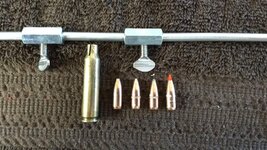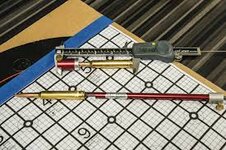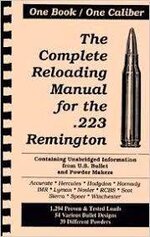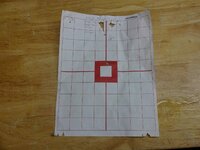- Messages
- 630
- Reactions
- 973
I've recently started reloading and have been consuming information with a fire-hose about the subject. I've run into a question I need some help with from those with more experience in this subject area.
I want to determine which C.O.A.L to use for reloading different bullet types like HP, SP, FMJ, or V-Max. So, I slit the neck of a case with a dremel tool to allow me to slide a bullet into the brass, but with enough tension to hold it in place. Then I inserted a round manually into the chamber and carefully closed the bolt.
This process came from some of my reading and viewing the "Gospel of YouTube" videos , where you could measure C.O.A.L when the bullet slides into the case until it hits the lands when the bolt is closed. There are several methods that I found on the subject. This is one i selected to try.
, where you could measure C.O.A.L when the bullet slides into the case until it hits the lands when the bolt is closed. There are several methods that I found on the subject. This is one i selected to try.
I carefully removed the round and used digital calipers to measure the overall length as follows:
Are my assumptions correct? Can I use my measurements lengths (minus several 1000s) as a guide for reloading for this Mossberg MVP or should I stick pretty close to those found in the documented data loads; Lee, Hornady, etc?

I want to determine which C.O.A.L to use for reloading different bullet types like HP, SP, FMJ, or V-Max. So, I slit the neck of a case with a dremel tool to allow me to slide a bullet into the brass, but with enough tension to hold it in place. Then I inserted a round manually into the chamber and carefully closed the bolt.
This process came from some of my reading and viewing the "Gospel of YouTube" videos
I carefully removed the round and used digital calipers to measure the overall length as follows:
- 55g HPBT 2.301 in
- 55g SP 2.313 in
- 55g FMJ BT 2.363 in
- 53g V-Max 2.436 in
Are my assumptions correct? Can I use my measurements lengths (minus several 1000s) as a guide for reloading for this Mossberg MVP or should I stick pretty close to those found in the documented data loads; Lee, Hornady, etc?















